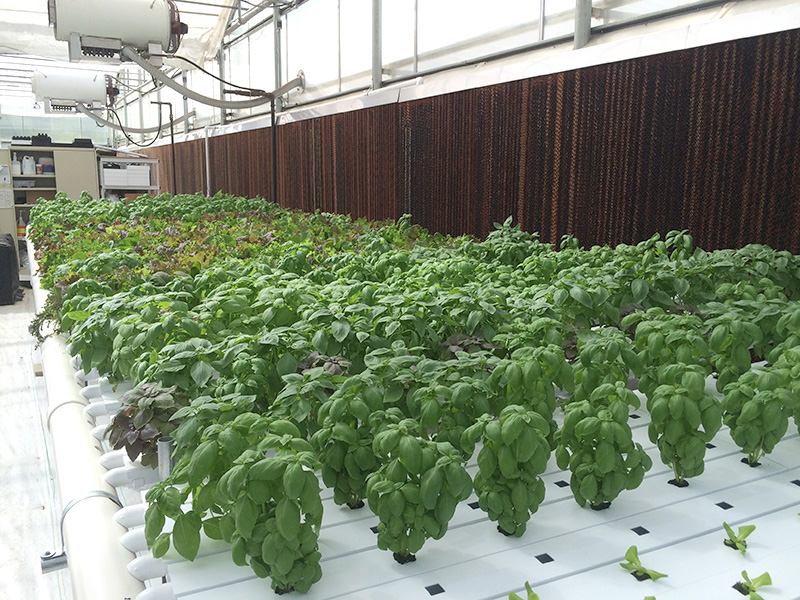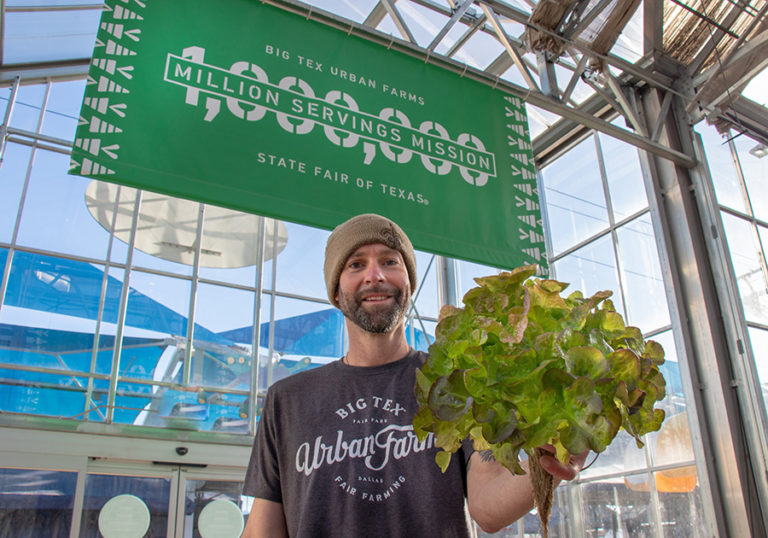How you grow and process fresh cut basil will impact the flavor and shelf life of the harvested product.
Basil is one of the most popular culinary herbs. Whether grown as a potted crop or for fresh cut sales, basil is an herb that’s in demand year-round. Growers looking to add edibles to their product mix should consider basil to be a must-have herb in their product offerings.
Clemson University horticulture professor Jim Faust said ornamental plant growers looking to supplement their crops with fresh cut basil will find some similarities with the propagation of unrooted vegetative cuttings.
“The physiology of ornamental unrooted cuttings is very similar to fresh cut basil,” Faust said. “It’s a stem with a few leaves on it. The way the basil is grown is going to impact the postharvest performance just like unrooted cuttings. Stock plant production for unrooted cuttings is just as important as the postharvest handling.
“Cuttings, whether harvested from ornamental stock plants or basil plants, have to be well toned to handle the rigors of packaging and the postharvest environment. A well-toned cutting is not too soft, meaning that it has not been grown too lushly with too much water and nutrients.”
Faust said growers want to produce more durable cuttings that are going to have a lower water content and stiffer leaves.
“Being that basil is an edible crop, the leaves shouldn’t be too stiff,” he said. “There is good data on basil showing that as the water content in the basil leaves increases the susceptibility to chilling injury increases. Growers should not be trying to grow the plants as fast as possible. This means incorporating some water and nutrient restrictions in order to produce harder plants. Growing a stiffer plant is going to make the harvested cuttings less susceptible to bruising and chilling injury.”
Faust said calcium also plays an important role in the strength of the leaf tissue.
“We have done enough studies with calcium over the last few years that as the calcium content increases in plant tissue, including the leaves and flowers, they are more resilient to physical stress and to fungal disease stress. The plants are more resilient to disease infestation from pathogens like Botrytis.”
Cool down is critical
Faust said if basil is harvested in a greenhouse, the temperature of the cuttings should be reduced relatively quickly. The longer the basil remains under warm temperatures the shorter its shelf life is going to be.
“When basil is harvested it should be placed into a refrigerated cooler that is maintained at 55ºF,” he said. “Removing the field heat is the highest priority. Harvested basil is going to have a longer shelf life when it’s stored at 55ºF.
“Some larger greenhouses have a 30-minute rule. From the time that workers cut the basil until the time it’s placed in a refrigerated cooler should never take more than 30 minutes. In bigger operations, trucks will be used to continually pick up Styrofoam coolers to hold the harvested basil. The trucks take the basil to a refrigerated cooler where it is unloaded and stored. The temperature in the greenhouse can be anywhere from 70ºF-90ºF so it is imperative to get the heat out of the harvested cuttings as quickly as possible.”
Faust said it is also important to harvest the basil in the afternoon.
“A lot of times people assume the best time to harvest basil is early in the morning when the greenhouse is cool rather than in the middle of the day when the temperature is warmer,” he said. “That is not the case with basil. Basil’s postharvest performance improves the later in the day the plants are harvested. The plants should be exposed to at least four hours of light before cuttings are harvested.
“Basil cuttings are more resistant to chilling injury and more resistant to ethylene damage when harvested later in the day. The plants are more ethylene sensitive in the morning than they are in the afternoon. Ethylene is produced as the plants warm up so that is one of the reasons the cuttings should be cooled down as quickly as possible. Ethylene causes leaf abscission. Cuttings harvested in the morning will abscise more leaves than those harvested in the afternoon.”

Photo courtesy of Hort Americas
Faust said the temperature in the storage cooler or delivery truck needs to be monitored to ensure it doesn’t drop below 50ºF to avoid chilling injury.
“Once the basil cuttings arrive at the cooler many growers will use forced air cooling, which is the same type of cooling used with fresh cut roses,” he said. “A fan pulls air across the cuttings and helps to quickly remove the field heat out of them.
“Weighing and packaging is usually done in the cooler because the harvested cuttings shouldn’t be kept in the greenhouses any longer than possible. If the person doing the harvesting also has to process the product, then that is going to slow the whole process down.”
Faust said the way the basil is processed and washed will influence its flavor.
“There are small hairs or trichomes on the basil leaves,” he said. “The trichomes have fragrance and flavor in them. If the basil is heavily washed too aggressively then the trichomes are removed which causes the loss of a lot of flavor.”
Avoiding issues with Botrytis
Botrytis is the main postharvest disease of fresh cut basil.
“Botrytis is ubiquitous and the spores are always going to be around,” Faust said. “As the temperature goes above 55ºF, there is going to be more Botrytis infection and a shorter shelf life.

Photo by Bruce Watt, Univ. of Maine, Bugwood.org
If the calcium levels in the basil tissue can be increased, just like in other crops, the Botrytis fungus won’t infect the plants as aggressively.
“If basil is being grown in greenhouses the plants are generally going to have Botrytis spores on them all of the time. 55ºF is the ideal temperature for basil, which is very chilling sensitive. Basil is different from many other herbs, which makes it more difficult in terms of shipping and handling. Most other herbs prefer a storage temperature of 40ºF. Basil is chilling sensitive so the temperature should not drop below 50ºF and shouldn’t go above 55ºF. This narrow temperature range can make it difficult to maintain fresh cut basil during storage and shipping.”
For more: Jim Faust, Clemson University, E-143 Poole Agricultural Center, Clemson, SC 29634; jfaust@clemson.edu; https://www.clemson.edu/cafls/faculty_staff/profiles/jfaust.
This article is property of Hort Americas and was written by David Kuack, a freelance technical writer in Fort Worth, TX.







